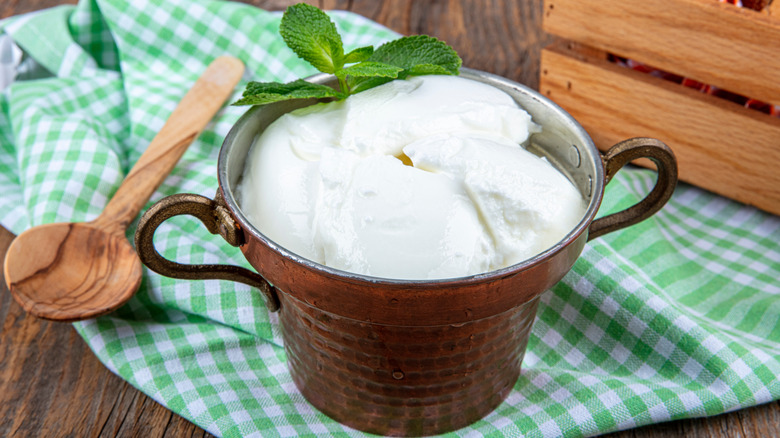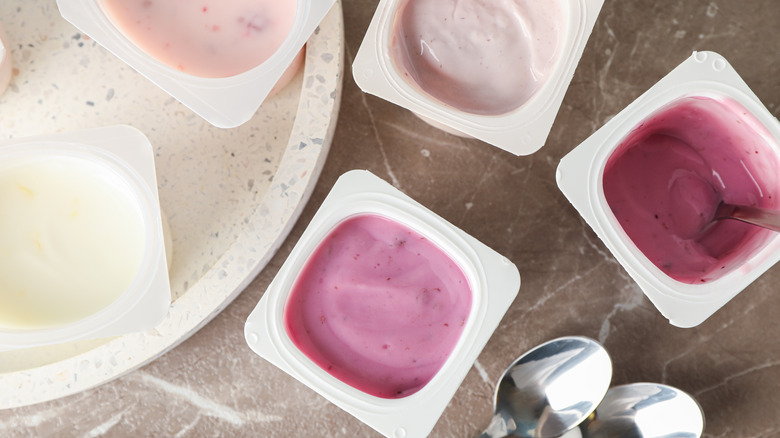What Is That Watery Stuff On Top Of Yogurt (And Do You Need To Discard It)?
Yogurt is a versatile snack that can be eaten on its own or used to enhance a dish. While we might be reminded of those sugary, overly-sweet yogurts from childhood when we think of the food, there are actually plenty of nutritional benefits to yogurt, as long as you avoid purchasing one with a ton of added sugar.
There are two well-known types of yogurt — regular and Greek. Each has a different nutritional profile, and overall, Greek yogurt is known to be healthier. It contains fewer calories, sodium, carbs, and sugars than traditional yogurt, as well as more protein. However, traditional yogurt offers more calcium, so if you're eating yogurt for its calcium content, you might want to stick to regular.
While there are plenty of reasons to eat yogurt, you're not alone if you've ever torn off a yogurt cap only to discover an unappealing amount of liquid pooled at the top. What is it, and should you be worried about it?
The water on top of yogurt is just natural separation
While you might not be able to help that the water on top of your yogurt turns you off to it, the good news is that there is no cause for concern. That watery substance is actually whey, and rather than toss it, you can simply mix it back into the yogurt.
When yogurt is made, there is a natural separation that occurs between the curds and whey. With that said, once the yogurt is packaged and left sitting for a while, that whey naturally separates once more. This is why you see water (whey) at the top of your yogurt (curds). Amanda Sauceda, RDN, told SELF that the whey shouldn't be discarded because it's so good for you. "There's tons of nutritional value in whey...It's rich in protein," Sauceda says. Of course, you can choose to pour it out, but there is only added value to mixing it in.
How to tell if yogurt has gone bad
The natural separation is no indication that your yogurt is expired. Of course, the easiest way to determine if yogurt is bad is to check its expiration date, but expiration dates aren't always clean-cut; a product might still be fresh even after it has technically expired. In this case, check the yogurt's color and scent to see if anything is amiss.
If you are still concerned about your yogurt's freshness, check for any signs of mold. Yogurt mold is commonly a blue-green color or a gray-white color. As far as smell goes, let your nose be the judge. If it smells off, it probably is bad. Specifically, look for a sour or rancid smell. Yogurt, for the most part, doesn't have much of a scent when it's fresh. Examine the yogurt's texture, too. It should be generally smooth, and any major clumps or curdling is a sure indication that it's no longer good to eat. And of course, when in doubt, throw it out.
And if you're wondering how long yogurt stays fresh in your lunch box, it's generally about two hours or so, unless there's some great cold insulation.


